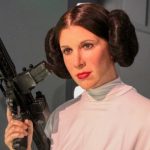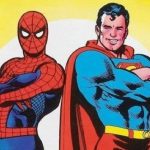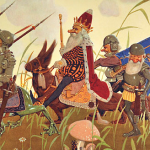 Technology
Technology  Technology
Technology  Humans
Humans 10 Everyday Human Behaviors That Are Actually Survival Instincts
 Animals
Animals 10 Animals That Humiliated and Harmed Historical Leaders
 History
History 10 Most Influential Protests in Modern History
 Creepy
Creepy 10 More Representations of Death from Myth, Legend, and Folktale
 Technology
Technology 10 Scientific Breakthroughs of 2025 That’ll Change Everything
 Our World
Our World 10 Ways Icelandic Culture Makes Other Countries Look Boring
 Misconceptions
Misconceptions 10 Common Misconceptions About the Victorian Era
 Mysteries
Mysteries 10 Strange Unexplained Mysteries of 2025
 Miscellaneous
Miscellaneous 10 of History’s Most Bell-Ringing Finishing Moves
 Technology
Technology Top 10 Everyday Tech Buzzwords That Hide a Darker Past
 Humans
Humans 10 Everyday Human Behaviors That Are Actually Survival Instincts
 Animals
Animals 10 Animals That Humiliated and Harmed Historical Leaders
Who's Behind Listverse?

Jamie Frater
Head Editor
Jamie founded Listverse due to an insatiable desire to share fascinating, obscure, and bizarre facts. He has been a guest speaker on numerous national radio and television stations and is a five time published author.
More About Us History
History 10 Most Influential Protests in Modern History
 Creepy
Creepy 10 More Representations of Death from Myth, Legend, and Folktale
 Technology
Technology 10 Scientific Breakthroughs of 2025 That’ll Change Everything
 Our World
Our World 10 Ways Icelandic Culture Makes Other Countries Look Boring
 Misconceptions
Misconceptions 10 Common Misconceptions About the Victorian Era
 Mysteries
Mysteries 10 Strange Unexplained Mysteries of 2025
 Miscellaneous
Miscellaneous 10 of History’s Most Bell-Ringing Finishing Moves
10 Characters Recast Because the Actors Died
The Hollywood machine stops for no one, even in the face of tragedy. The industry exemplifies that philosophy with several unfortunate franchises. Filmmakers may have big plans for a movie series or a TV show, but those aspirations are cut short when the actors pass away. These losses put the intellectual properties in a precarious position. They could always mirror the actor’s death by killing the character, but the alternative is arguably harder.
Filmmakers sometimes recast characters, recruiting new actors to fill their shoes. The characters in question may be too essential to kill off. The drawback is that swapping a new face for an established figure could easily unravel the product, as the second actor may not have the same chemistry with the cast or success with the material. On the other hand, these situations are a chance to get a fresh look at the characters. Perhaps the new actors could emphasize aspects not seen before. While you can certainly lament the circumstances, the resulting changes don’t have to be all bad. It all depends on the creatives.
Related: 10 Actors That Are Polar Opposites from Their Characters
10 Albus Dumbledore
As the beloved headmaster of Hogwarts, Albus Dumbledore serves as a constant mentor figure to Harry Potter. Playing that part in the first two films was Richard Harris, who was an inspired choice. He had a grandfatherly grace, which made him easy to accept as an authority figure. At the same time, he subtly betrayed a twinkly mischief, instantly putting you at ease. All was right with the world whenever he was onscreen. Sadly, that wasn’t very long due to Harris’s advanced age and Hodgkin’s disease.
His passing led filmmakers to bring in Michael Gambon for the remainder of the series. His attempts to avoid imitation are both a benefit and a detriment. He lacks the composure and compassion of Harris; he focuses instead on the character’s imperfections. He gets visibly frustrated at times, which only emphasizes his gruff demeanor. This routine actually makes him closer to Gandalf at times. By default, that makes him convincing as a surrogate father, albeit from the wrong franchise.[1]
9 Spartacus
Despite its stylized aesthetic, the Spartacus TV show was a poignant tale about the slave who stood against the Roman Empire. The creators accomplished that in the first season, with Andy Whitfield in the title role. He broke your heart with his quiet pathos and intensity. You looked forward to seeing what he’d do with the character as he evolved. However, problems arose when Whitfield came down with non-Hodgkin lymphoma. The creators initially thought he’d make a full recovery, but it was not to be. Before passing, he gave his blessing to a successor.
That successor was Liam McIntyre, who assumed the role for the remaining seasons. In contrast to Whitfield’s understated approach, his Spartacus was loud and boisterous. This routine was appropriate since the hero was now a leader of men instead of a sneaky slave. The catch was that he lacked Whitfield’s natural charisma, so he felt like a blunt instrument by comparison. As hard as McIntyre tried, Spartacus became less interesting under his watch.[2]
8 Slinky Dog
Toy Story was a veritable who’s who of comedians and personalities of the time. Among the icons was Jim Varney, who voiced Slinky Dog. As the springy canine, he opted for his easygoing Southern routine. His raspy voice oddly complemented his friendly demeanor. Listening to him felt like talking to your jolly neighbor down the street. That persona perfectly matched the toy’s relaxed appearance and loyal outlook. That’s why the filmmakers did their best not to change it in recasting.
Although Varney died of lung cancer after Toy Story 2, hope came from his friend, Blake Clark. He took over as Slinky, but you could hardly tell. Clark’s impression sounded exactly like his buddy’s; they’re practically indistinguishable. Granted, he didn’t do anything new with the role, but no one asked him to. His job was to convince you that you were listening to the same character. Suffice it to say that he succeeded.[3]
7 Gloria
Finding performers who can both act and sing is no small feat. Happy Feet mostly accomplished that with its celebrity voice cast. As Gloria, the penguins’ star singer and hero’s love interest, the filmmakers got Brittany Murphy. She delivered the lines well, especially during the emotional scenes. You could hear the conflict in her tone as she struggled with her feelings toward the protagonist. She’s also comfortable with the singing. Her voice didn’t have much power, but it didn’t need to be for the pop songs she covered. Regretfully, though, Murphy died of pneumonia prior to the sequel.
Thus, Happy Feet Two brought in Pink, who’s practically Murphy’s opposite. Her voice was more powerful, which helped her carry the songs. On the other hand, she didn’t sound as natural with the spoken lines. That outcome wasn’t surprising, given she’s primarily a singer. It also didn’t hinder the film any more than its other flaws, as this second adventure largely sidelined Gloria. Consequently, you wondered why the creators bothered with such a high-profile replacement.[4]
6 Frieza
This galactic emperor has had multiple voices across the Dragon Ball franchise. Starting with Dragon Ball Z Kai, though, Chris Ayres became the mainline English voice of Frieza. He quickly won fans’ hearts with his theatrical performance. His prim and proper cadence suited the villain’s vanity. Beneath that effeminate tone, however, was an underpinning of murderous menace, making him equal parts entertaining and intimidating. Sadly, Ayres’s battle with pulmonary disease ultimately claimed his life. This event necessitated another voiceover change, but there wasn’t much difference.
Enter Daman Mills. He was an understudy to Ayres and periodically swapped out as Frieza before finally assuming the role full-time. Similar to Slinky, the difference was practically imperceptible. Mills matched Ayres to such an extent that you’d have been hard-pressed to tell them apart. You could argue the merits of a secondhand performance, but why fix what wasn’t broken?[5]
5 Manute
Most figures in Sin City were violent killers, but Manute was among the most intimidating. That fear factor came from Michael Clarke Duncan, who was as reliably menacing as his other villain roles. Although he spoke as slowly as most characters, his lines somehow sounded far more significant. That’s no doubt thanks to his measured movements and terrifying vocal depth. When he was in the room, everyone else seemed small. That’s what made it so shocking when he died of respiratory failure. Nevertheless, the filmmakers weren’t finished with Manute.
Although Sin City: A Dame to Kill For featured many of the same characters, it also recast several of them. Dennis Haysbert joined in as Manute. He was another imposing gentleman with a deep voice, so it’s easy to see why the creators recruited him. The sad part is that he seemed like a few degrees less than Duncan through no fault of his own. He matched the former actor’s beats, but he naturally wasn’t as effective. The whole time, Haysbert felt like the second choice, which he unfortunately was.[6]
4 Immortan Joe
Mad Max villains have always been inhumanly imposing, and Immortan Joe was no exception. Hugh Keays-Byrne had a massive presence as the cult leader in Fury Road. Despite a mask covering his mouth, he exuded rageful authority through piercing glares, powerful body language, and a booming voice. Other times, though, he unleashed the same animalistic savagery he’d previously displayed as the Toecutter in the original Mad Max. These films each had a new set of characters, so you bought that repeat casting.
Furiosa: A Mad Max Saga bucked that trend by serving as a prequel to Fury Road. While most of the villains returned, Keays-Byrne had already passed away. Lachy Hulme then stepped in as the new Immortan Joe. He didn’t have quite the same physical presence, but he did boast the spooky eyes and meaningful movement. His Joe was more methodical—quietly scheming rather than charging forward. Hulme’s methodical performance worked for that alternate take. Moreover, it enriched the character overall.[7]
3 Iroh
Avatar: The Last Airbender may have focused on a group of kids, but a standout character was Zuko’s wise uncle, Iroh. This old war vet lost his son and eventually saw his nephew as a surrogate. Throughout the show, he encourages the boy to renounce his hatred through both sage advice and mischievous humor. Makoto “Mako” Iwamatsu masterfully voiced this mentor. His nuanced delivery betrayed years of experience, giving ample weight to both the patient teachings and the sorrowful father. Every bit as endearing were his moments of goofy humor. These aspects could have created an uneven character, but Mako married them seamlessly for two seasons until his untimely death from esophageal cancer.
The final season replaced him with Greg Baldwin. Although he didn’t have a ton of lines in this last part, he was clearly doing an impression of Mako. The quality varied. Sometimes, he sounded exactly like him. Other times, the difference was laughable. Oddly enough, he seemed to play up the Japanese accent. Since it wasn’t his natural dialect, his delivery became stilted in the attempt. In the end, Baldwin was a pale imitation.[8]
2 Tony
Many viewers thought Heath Ledger’s swan song was the Joker in The Dark Knight, but he started making another film soon after. The Imaginarium of Doctor Parnassus saw him play Tony, a shifty philanthropist hiding his true past. Ledger recalled his romantic lead sensibilities to deliver a thoroughly charming turn. His smirking routine was perfect for a con man. It was like watching a darker version of his earlier roles. That sense sadly became a full-circle moment as Ledger died of a drug overdose partway through production. Thankfully, the movie’s premise provided a solution.
The eponymous Imaginarium lets the characters visit a dream world, so the filmmakers determined that Tony would change his appearance upon each visit. That line of thinking led them to cast Johnny Depp, Jude Law, and Colin Farrell as alternate versions. None of them resembled Ledger’s take, but they each seemed to capture a distinct part of the character’s personality. Depp was the romantic womanizer; Law embodied the easygoing everyman enchanted by adventure; and Farrell was the sleazy scam artist. That tactic lent some coherence to a crazy situation and a crazier flick.[9]
1 Disney Characters
Here’s one of the downsides of a studio being around for a century. Disney has crafted countless iconic characters during that time. The actors were instrumental in that success, delivering unforgettably endearing performances to put these fictional figures on the map. However, none of them could outrun time. Decades of filmmaking meant that many of these actors died of old age or other causes. Of course, that didn’t mean that Disney was finished with their characters.
The studio nearly always had an understudy or soundalike ready to go. These replacements stepped in for sequels, tie-ins, spin-offs, games, and rides. Though some portrayals were better than others, they all allowed these icons to live on. That’s why all the fairy tale princesses could get together in projects like Kingdom Hearts or Ralph Breaks the Internet. Moreover, it’s how Mickey Mouse has endured since the beginning and will continue for years to come.[10]








